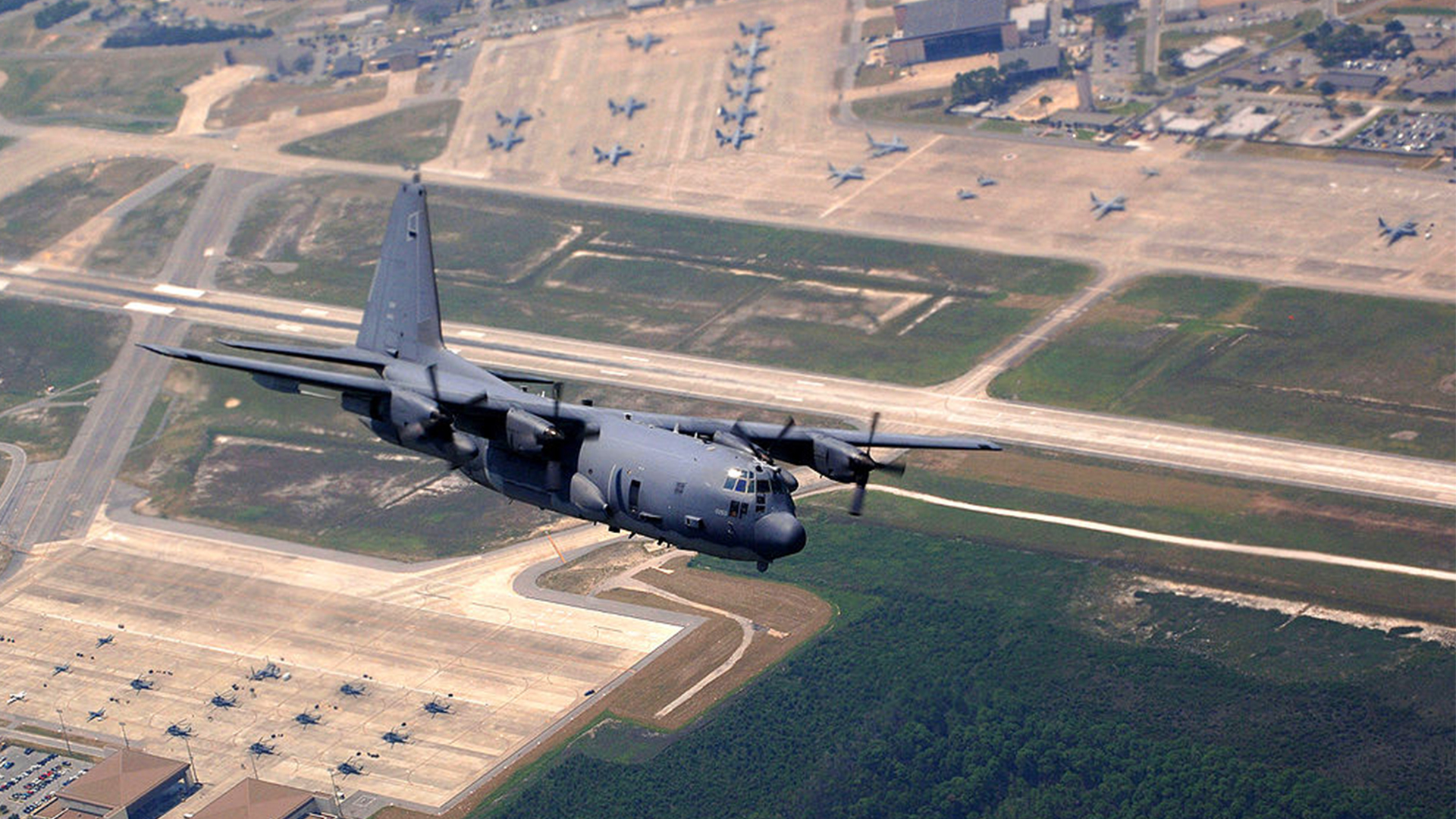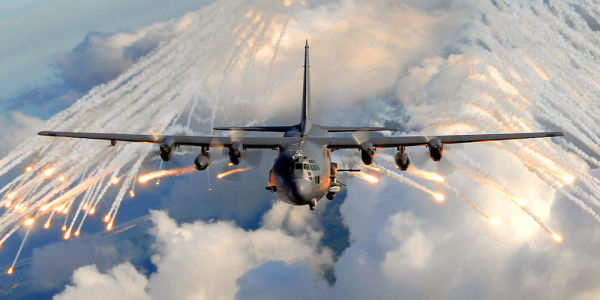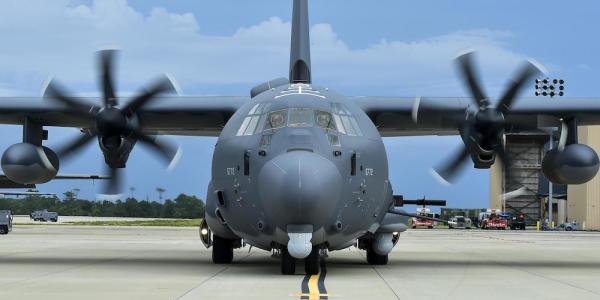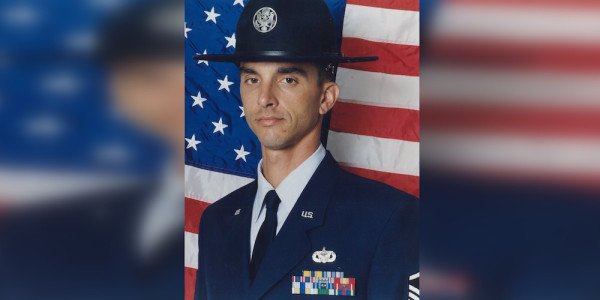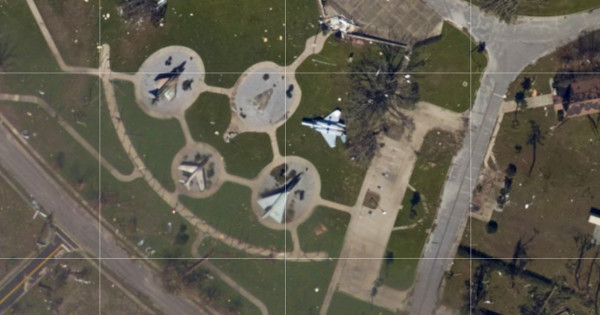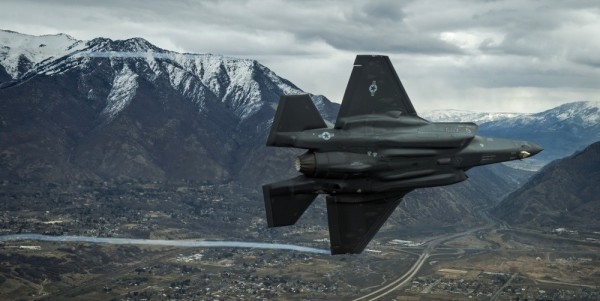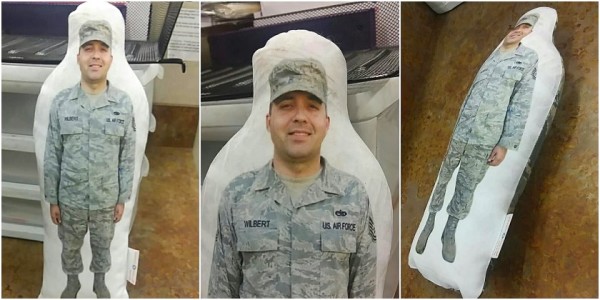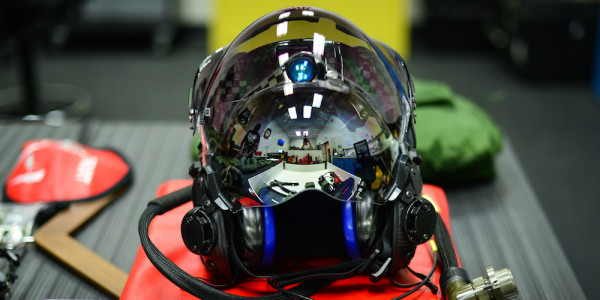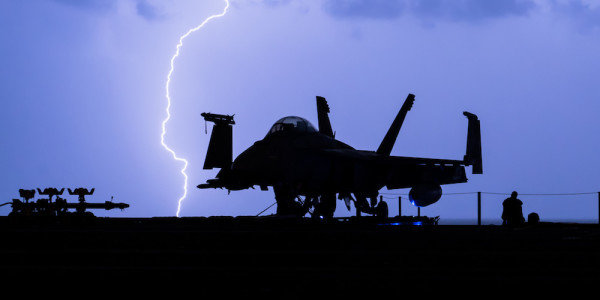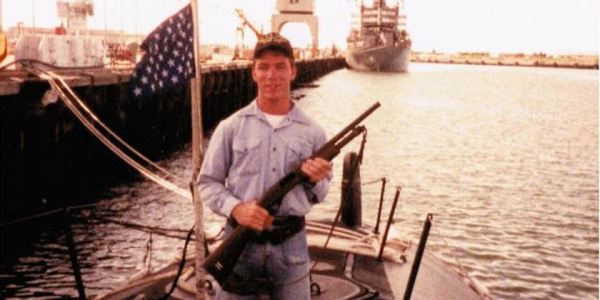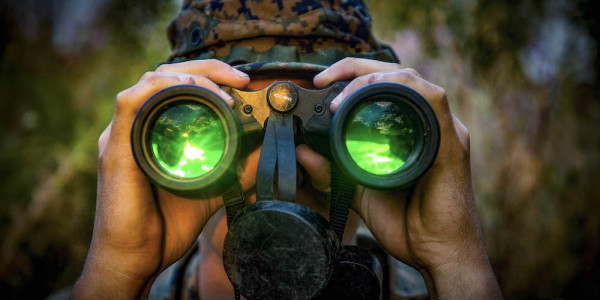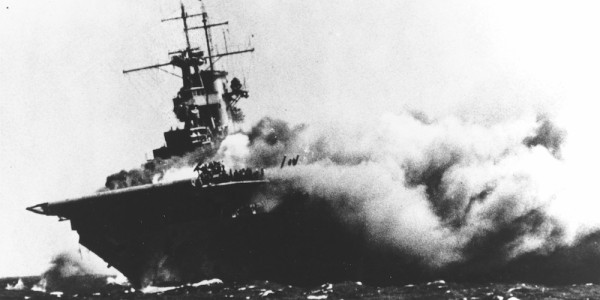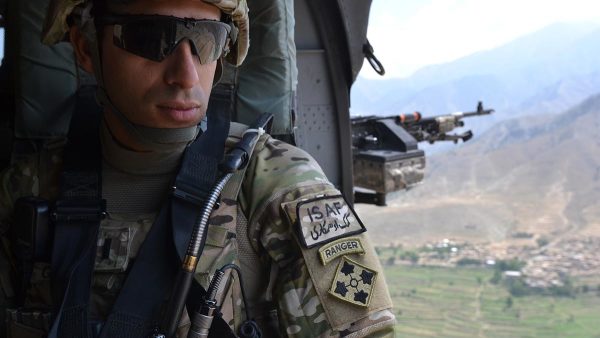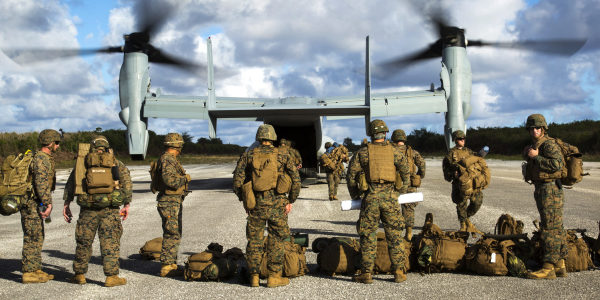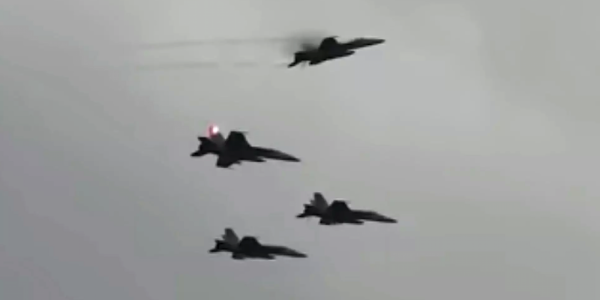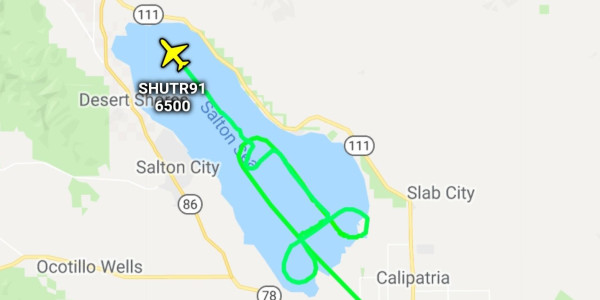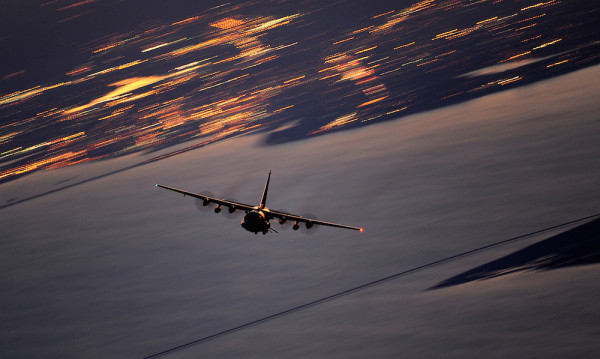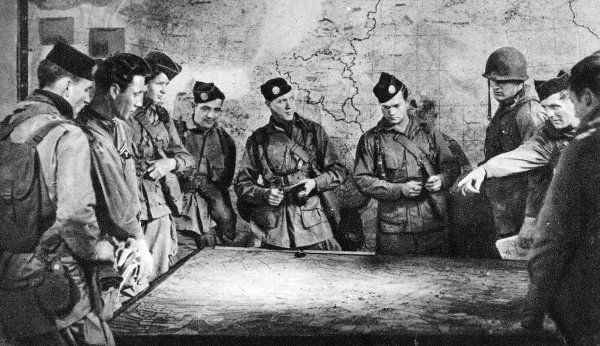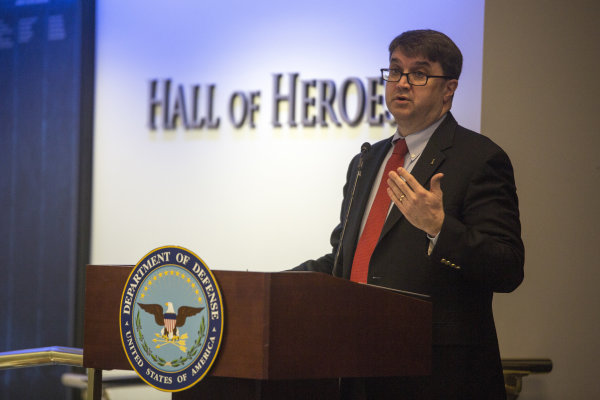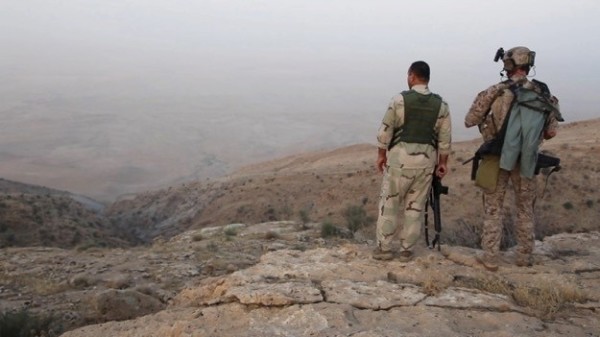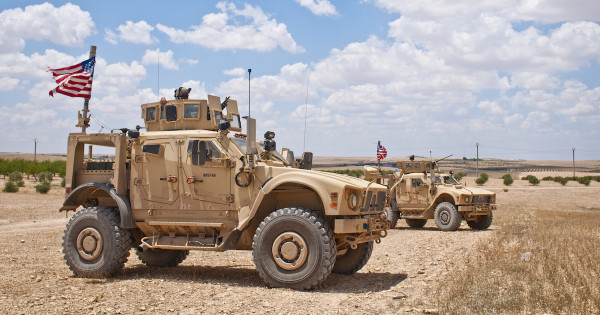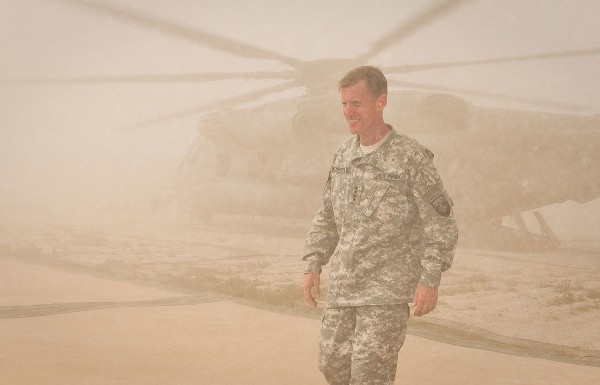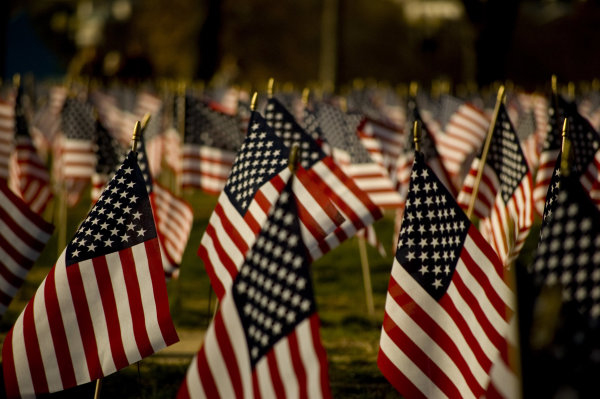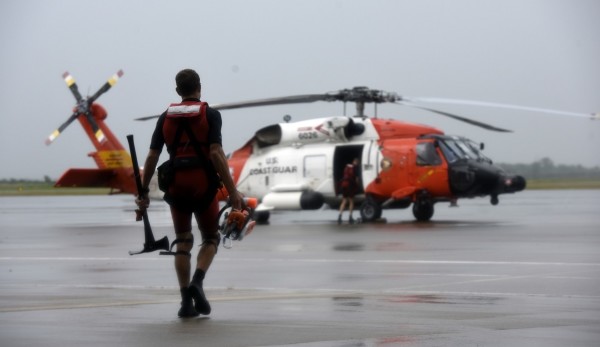A bouquet of flowers stood in the bright sunshine atop a plaque at Hurlburt Field last Friday, where the 1st Special Operations Wing hosted a ceremony in remembrance of the largest single loss of life for the Air Force in Operation Desert Storm.
That loss occurred 30 years ago, on Jan. 31, 1991, when an AC-130H Spectre gunship — one of the Air Force’s deadliest aircraft for supporting ground troops — under the callsign Spirit 03 was shot down by an Iraqi surface-to-air missile during the battle of Khafji.
All 14 airmen aboard were killed, but one Air Force general wrote that their sacrifice helped usher in a new era of the AC-130, one where new technology and tactics helped ensure that no gunship has been lost in combat since.
“We owe much to those who sacrificed everything aboard Spirit 03, not only because ‘they gave the last full measure of devotion’ for us, but also because they bequeathed to us, at a critical point in history, the decisive motivation to reinvent the AC-130 for a new challenge and a new century,” wrote now-retired Maj. Gen. Mark Hicks, a career gunship pilot, in the summer 2014 issue of Air Commando Journal.

Hicks’ account not only explains the impact of Spirit 03’s crash on the AC-130 community, but also debunks some of the myths that grew out of the fatal tragedy.
Here’s what happened: on Jan. 29, 1991, Iraqi troops moved south out of Kuwait and assaulted the border town of Khafji, Saudi Arabia. The assault force included 40 tanks and 500 troops, according to retired Chief Master Sgt. Bill Walter, a Desert Storm veteran who served 42 years in the AC-130 community and wrote a detailed account of Spirit 03’s crash for Air Commando Journal in 2012.
Coalition troops were overpowered and pulled back into Khafji, but two U.S. Marine reconnaissance teams were left behind inside city limits, Walter wrote. Over the night of Jan. 30 and into the morning of Jan. 31, two AC-130H gunships with call signs Spirit 01 and Spirit 02 swooped in to destroy Iraqi armor and vehicles, but they encountered stiff anti-aircraft fire.
A third AC-130, Spirit 03, arrived a few hours later and spent several more hours circling the fight awaiting tasking, Walter wrote. Eventually, Spirit 01 and 02 peeled off to return to base and advised Spirit 03 to do the same as anti-aircraft fire intensified, but the third gunship continued to accept target tasking from a Marine forward air controller flying over Khafji.
Spirit 03 shot up a border post that Iraqi soldiers were using for cover, but by 6:00 a.m., Spirit 03 was running low on fuel as daylight approached. Still, the crew continued firing on targets even as it declared ’bingo’ fuel, which meant that it had only enough gas to make it back to base, Walter wrote. At one point, the Marine air controller suspected a Free Rocket Over Ground system in the area that could have posed a threat to the Marines, so Spirit 03 went looking for it.
Then things went south fast.

Without warning, a small Iraqi surface-to-air missile collided with the aircraft’s left wing, starting a wing fire near the external fuel tank, Walter wrote. At first, pilots Capt. Thomas Bland and Maj. Paul Weaver maintained control of the gunship, but as the burning fuel spread, two-thirds of the left wing broke off and made the aircraft spin wildly out of control. The extreme G-forces made bailout nearly impossible and the aircraft crashed into the shallow waters of the Persian Gulf.
It took a month to find the crash site, and that delay fueled intense speculation about what had happened, Hicks wrote in his article: “That speculation, fueled by our grief, frustration, and anger, gave birth to legends that persist to this day.”
One of the first myths was that the pilot, Maj. Weaver, was overly eager to see combat after missing it in the 1989 invasion of Panama in Operation Just Cause, Hicks wrote. There was also the myth that the aircrew ignored the danger of the rising sun and died heroically defending Marines who were in danger of being overrun.
Neither story is completely true, the general wrote.
“Both stories contain partial facts, but are somewhat misleading,” Hicks wrote. “The fact remains that Spirit 03 was shot down by an enemy weapons system while doing what we asked them to do and exactly as we had trained them to do.”
There were no signs of incompetence or reckless heroism in the crew’s actions, Hicks wrote, nor was there a particular urgency for them to find the FROG system, he said. The crew did make a tactical error by staying in a high-threat area with a backlit sky without justification for the risk, he said, but there were also shortcomings in training, technology, and tactics that contributed to the loss.
On the technology front, the sensors and fire control system were antiquated and finicky except at the exact right altitude and airspeed, Hicks wrote. This affected the tactics and flight paths employed by AC-130 pilots, Hicks argued, which made the crew more vulnerable to enemy fire. Even worse, when an AC-130 came under fire, the aircraft’s antiquated flare system was useless against later-generation man-portable surface-to-air missiles. Defensive improvements were “long overdue,” Hicks wrote.
“In the years following Desert Storm, modifications included modern chaff and flare dispensers, infrared missile-launch warning, and modern electronic countermeasures,” he added.

In an email to Task & Purpose, Chief Master Sgt. Bill Walter explained that after Desert Storm, all AC-130 aircraft were fitted with AN/AAR-44 Missile Approach Warning Systems. Those systems detect man-portable air-defense (MANPADS) missile launches, warn crews of the threat, and automatically deploy flares. This system works without any crew interaction, which saves precious seconds under fire.
The crash of Spirit 03 motivated the widespread implementation of these technologies, Hicks said, but they would not have made much of a difference without developing better tactics, too. Crews re-focused on minimizing their exposure to enemy fire while flying loose, unpredictable orbits around the combat zone that also went to higher altitudes and lowered their chances of getting hit.
They also cut out unnecessary crew communication procedures, used better navigation systems and night-vision goggles, and got used to breathing through oxygen masks to keep working at high altitude in the AC-130’s unpressurized cabin. These abilities gave crews more flexibility to maneuver and find targets while in combat.
“Again, improved fire control and better sensors really helped, but it was a commitment to be tactically sound that really made the difference,” Hicks wrote.
Walter expressed a similar view.
“The fundamental lesson learned is to always expect to be fired upon when firing,” he told Task & Purpose. “This rule dates back to the earliest days of AC-130 gunship employment. Though the crew of Spirit 03 was well trained in that aspect, the sun was breaking over the horizon to their east, likely preventing visual acquisition of the inbound MANPADS missile.”
“Had the crew been able to see the inbound missile, maneuvers and decoy flares would have likely defeated it in a similar way it did for two other AC-130 crew during [Desert Storm],” he continued. “Unfortunately, nobody saw it coming.”
However, it was also important to avoid over-correction, Hicks cautioned. Some members of the AC-130 community over-reacted to Spirit 03 by avoiding daytime missions entirely, he said. While the slow-moving Spectre is more vulnerable to enemy fire during daylight, Hicks said avoiding daytime missions cost ground troops vital air cover during combat in Afghanistan. Spectres flew in daylight a year before Desert Storm, during Operation Just Cause, Hicks pointed out, and even night-flying isn’t completely safe.
“We must always balance our personal survivability, and that of the aircraft we fly, against the utility of the mission—and that decision is the commander’s business,” Hicks wrote.

Unfortunately, Spirit 03 was not the last AC-130 crash. Three years later, in 1994, a Spectre with the 16th Special Operations Squadron crashed off the coast of Kenya when a high-explosive round detonated prematurely in the bore of the aircraft’s cannon. Eight crew members died immediately, and a ninth died of his injuries years later. That loss carried its own lessons-learned, and over the past 30 years not a single AC-130 has gone down in combat, even through thousands of combat hours during the Global War on Terror.
While the Spectre gunships were retired in 2015, subsequent AC-130 models such as the Spooky, Stinger II, and Ghostrider continue to apply the same lessons learned after Spirit 03 went down.
“The AC-130 community went to Desert Storm ill prepared for combat on a modern battlefield,” Hicks said. “We had grown complacent over years of peacetime operations, permissive environments, and little investment in modernization … It was the combination of the motivating impact of the loss of Spirit 03 and advanced technology that enabled the renaissance in tactics through the 1990s, that set conditions for the golden age of the AC-130 gunship in Afghanistan and Iraq.”
Walter echoed that sentiment.
“The series of events leading to the loss of Spirit 03 has been studied at great length and is currently part of the training syllabus for AC-130 crew training,” he told Task & Purpose. “The lessons passed on to crews trained since that fateful day are the true legacy of Spirit 03.”
The crew members of Spirit 03:
Maj. Paul Weaver
Capt. Thomas Bland Jr.
Capt. Arthur Galvan
Capt. William Grimm
Capt. Dixon Walters, Jr.
Senior Master Sgt. Paul Buege
Senior Master Sgt. James May II
Tech. Sgt. Robert Hodges
Tech Sgt. John Oelschlager
Staff Sgt. John Blessinger
Staff Sgt. Timothy Harrison
Staff Sgt. Damon Kanuha
Staff Sgt. Mark Schmauss
Sgt. Barry Clark
Featured Image: An AC-130U Spooky gunship from the 4th Special Operations Squadron flies over Hurlburt Field, Fla., on Aug. 24, 2007, during training. (Air Force photo / Airman 1st Class Emily S. Moore)
Related: AFSOC to finally mount a laser weapon on an AC-130 gunship

